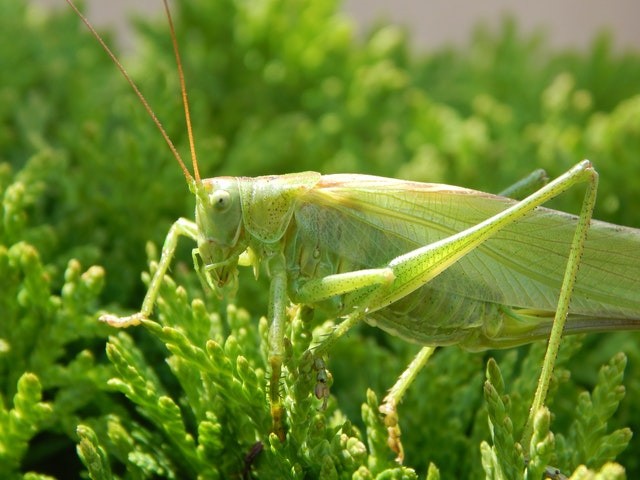Using sophisticated three-dimensional imaging techniques, researchers recently identified astonishing similarities between the mouths of grasshoppers and mammal teeth.
According to a Phys.org report, the team of researchers led by palaeobiologists at the University of Leicester used the said technological technique to map the shape of the mandibles of grasshoppers accurately.
Essentially, there are approximately 11,000 identified grasshopper species. It likely comes as a surprise that not all insects of this kind are eating grass.
In fact, they're playing many important roles in grasslands, as well as other ecosystems. Some, the study specified, are even carnivorous.

Grasshopper Mandibles
However, analysis of the ecological essentiality of grasshoppers is not straightforward, and discovering what they're eating needs detailed research of the contents of their guts or painstaking or time-consuming observations of the manner they're feeding in the wild. Nonetheless, there's a better technique.
Similar to animals with teeth, the grasshoppers' mouthparts, called mandibles, differ depending on what they're eating. Some species are molar-like and grind tough food such as grass. Others, on the other hand, have sharper cutting edges. Until now, this method has lacked precision, assigning grasshoppers only to extensive feeding categories.
However, this Leicester study published in Methods in Ecology and Evolution, with input from the School of Earth Sciences at the University of Bristol, offers a new way of investigating the diets of the many species researchers have little knowledge and information about, either due to their rarity or due to the fact that they are extinct.
Grasshopper Diet
Chris Stockey, Leicester Ph.D. researcher and corresponding author of the study, said that knowing what animals are eating is essential to understanding ecosystems, although working this out can be difficult, not to mention, time-consuming, specifically if the animals being studied are rare, tiny, or move quickly.
He added that one of the advantages of this approach is the powerful comparisons it offers. Surprisingly, he continued, "comparing the mandible landscapes of grasshoppers" with the teeth of mammals enables the grasshopper diet to be forecasted with 82-percent accuracy.
The corresponding author described the comparison as amazing, considering that the mammals' mouthparts and grasshoppers have evolved independently for 400 million years and were inexistent in their common ancestor.
A Nun-Destructive Approach
According to Professor and Palaeobiology and Director of the Center of Palaeobiology at the University of Leicester Mark Purnell, they measured the shapes of the mouthparts of grasshoppers and examined them like a landscape's topography. As a result, they discovered clear differences associated with diet.
Purnell explained mandibles from carnivorous grasshoppers that eat soft flesh possess "steeper slopes and sharper cliff edges," while those eating tough plant material like grass have mandibles that have complex undulating "landscapes."
The study was based on museum samples, part of the huge selections kept behind the scenes for researchers to examine, rooms filled with millions of specimens beneath the viewing galleries. Even the most examined collections like Carles Darwin's yield new species every year, as indicated in a related SciTechDaily report.
What Do Grasshoppers Eat? Startling Similarities Discovered Between the Mouths of Grasshoppers and Mammal Teeth https://t.co/EXRLyn3KBh
— SciTechDaily (@SciTechDaily1) March 16, 2022
Essentially, the employment of this new non-destructive approach to museum collections offers an alternative way to learn about the ecologies of rare animals while preserving them for future research.
Senior Curator Dr. Ben Price, at the Natural History Museum, who was not part of the study said, this work is a great example of integrating modern analytical approaches with historical specimens from museum collections to help understand the planet's biodiversity.
Related information about surprising facts about grasshoppers is shown on Facts Palace TV's YouTube video below:
RELATED ARTICLE : Half Male, Half Female Stick Insect Discovered, The First Reported Dual-Sex of Its Kind
Check out more news and information on the Insects Science Times.










